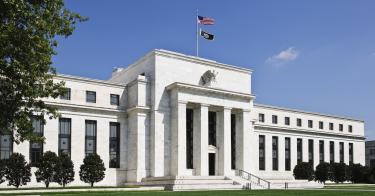Policymakers and politicians love to flex their muscles. They actively try to boost or slow down economic activity based on their perceptions as to whether the economy is “too hot” or “too cold.”
It’s unfortunate; Americans are better served when the federal government remains neutral on economic matters. This rule applies to monetary policy as well, but the U.S. remains far from achieving a goal of monetary neutrality.
Part of the problem was on display earlier this month when Sen. Elizabeth Warren, Massachusetts Democrat, sent open letters to Stephen Moore and Herman Cain, who then were prospective Federal Reserve Board nominees (Mr. Cain withdrew his name from consideration Monday). The letters pointedly asked the nominees whether they believe the Fed should have a mandate to pursue full employment.
To answer this question, the nominees should rely on the Fed Board’s own statements: “the maximum level of employment is largely determined by nonmonetary factors that affect the structure and dynamics of the job market. These factors may change over time and may not be directly measurable.”
Despite this admission, maximum employment remains part of the Fed’s Congressional mandate.
Because nonmonetary factors determine maximum employment, and because these factors are practically impossible to measure, it would obviously be better for the central bank to focus on variables that it can directly measure and that are determined by monetary factors.
Total spending fits this bill perfectly. Even better, targeting total spending would require the Fed to change its policy stance only in response to changes in the amount of money people need, allowing it to maintain neutrality.
Targeting total spending would help to smooth out economic downturns and avoid unsustainable booms. That’s the best monetary policy can do to foster the ideal conditions for maximum employment. It also has many other advantages over targeting inflation and employment.
For starters, it would help avoid the kind of policy pickle the Fed found itself in during the onset of the 2008 financial crisis. That’s when both unemployment and inflation were rising, pushing the Fed to tighten its policy stance in an already slowing economy.
Tightening the money supply at such a time worsens an economic downturn, likely increasing unemployment. A central bank that targets total spending avoids this policy error and focuses, instead, on stabilizing the overall economy to promote the ideal conditions for maximum employment.
Targeting total spending would also help the Fed make the right decisions when faced with a negative supply shock — say, an oil embargo or a trade war that makes goods and services scarcer.
When this sort of shock hits, prices rise, pushing an inflation-targeting central bank to tighten its policy stance to fight the rise in prices. Of course, tightening in this situation only exacerbates the problem, because people end up with even less money to buy the already scarcer (higher-priced) goods.
A central bank that targets total spending, on the other hand, would make the right decision: It would allow prices to rise, signaling higher demand for those goods and services, and it would provide the economy with more money (provided total spending falls) so that people can maintain their level of spending.
Another major advantage of this framework is that it allows people to more easily enjoy the benefits of productivity gains.
When productivity improves, the costs of production fall — putting downward pressure on the prices of consumer goods. A central bank that targets total spending allows these prices fall, thus permitting people to buy more goods and services at lower prices.
Put differently, the central bank would accommodate the Walmart business model. An inflation-targeting central bank, on the other hand, would constantly fight the Walmart business model to maintain a higher level of inflation.
People are best served by neutral monetary policy, whereby the central bank supplies just the amount of money the economy needs to keep moving, no more and no less. It is time for Congress to mandate that the Fed achieve neutrality through targeting total spending.
This piece originally appeared in The Washington Times



